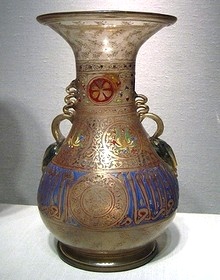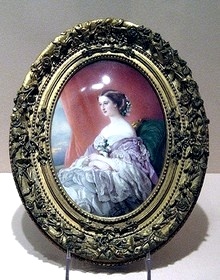Enamel Art - Spanning The Globe

An International Art
Many think of cloisonne enamel as a Chinese innovation, which like their porcelian, led European styles. They certainly did produce pieces similar to the 18th Century enamel plaque on the left for many years but originally imported the technique from Europe.
During the final rising of the Byzantine empire in the 14th century, both fine examples and master enamellers travelled east. The skills they brought were quickly absorbed and adapted, the Chinese had known forms of enamelling before but this suited them well.
Equally, the Byzantines had simply developed techniques handed down from the original Roman Empire, who spent three centuries developing skills they inherited from others. The earliest accepted pieces of true enamel were made twelve centuries earlier in Cyprus, the foundation of a truly international art.

Adaptable to Culture
Enamel art has travelled so well because of the unique opportunity this offers. The ability to satisfy the highest standards of varied cultures and be applied to many surfaces. Enamel has been fused to iron, steel, brass, copper, precious metals and as in the 14th century Islamic example shown here, often to glass itself.
This type of detailed caligraphic enamel has never been surpassed by other nations and did influence Byzantine work, their empire in a way brought together European and Islamic styles. The Chinese originally referred to cloisonne enamel as Dashi, or Muslim ware, even though this was not entirely accurate.
The debate that aspect highlights reality. We can not be exact on the places, or individual craftsmen who developed enamel art, simply marvel at the skill of early enamel art.

Enamel portraiture
As much as enamel flourished worldwide, not all cultures see the individual as a natural focus of art. Western Europe led that aspect of enamel artistry, transferring portrait work to a medium that could not be better suited, or embellishing a personal coat of arms.
Enamels had been produced across Europe for millenia, the Celts were crafting their own before Julius Caesar invaded. Many other European countries developed individual techniques and shared that development, as has always been the case.
France is known as a centre for enamelling, from the 18th Century portrait on the left, back to mediaeval Limoges. Yet progress in Limoges came from Venetian craftsmen, who learnt much of their trade from Islamic culture. So the story goes, a circular exchange of skill through the love of art, enamel is truly international.
 07709 539123
07709 539123